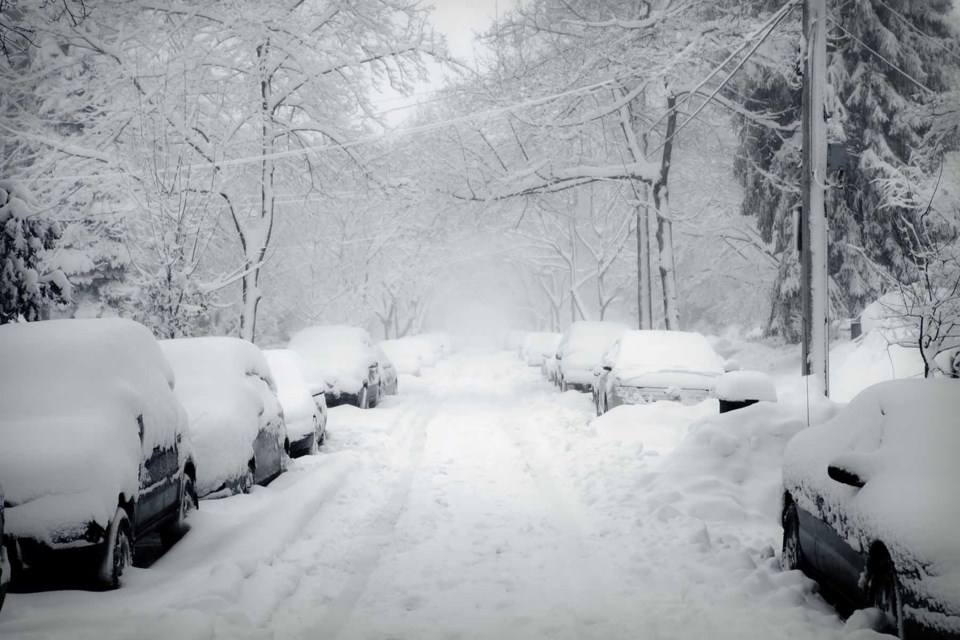Environment Canada has placed much of the southern part of the province under a winter storm watch, with conditions expected to worsen throughout the day on Saturday before the main system arrives Sunday and brings with it heavy snow, high winds and likely blizzard conditions -- winds of 40 km/h or higher, visibility of 400 metres or less and lasting for four hours or more.
Accumulations of 30 to 50 cm of snow are expected, with northerly winds gusting to 70 km/h and beyond.
Updates on the situation will be provided through the SaskAlert app, which provides critical information on emergencies in real time. The app is available for free on Apple and Android app stores.
“Emergency response staff and resources are being deployed and are ready to respond if and when needed,” Saskatchewan Public Safety Agency President Marlo Pritchard said. “The Provincial Emergency Operations Centre (PEOC) is already coordinating with government agencies, utilities and other emergency managers.”
Emergency tips -- Before the Storm
- Be prepared for 72 hours during an emergency. Visit www.saskatchewan.ca/spsa to learn how to develop your own emergency plan and prepare an emergency kit.
-
Safely store alternative sources of heating fuel, like firewood and propane.
-
Consider purchasing and safely installing a portable generator.
-
Make sure all animals have shelter, preferably indoors, and that they have a water supply that won’t freeze.
-
Residents in rural areas should tie a string as a guide between buildings.
Emergency tips -- After the Storm
- Stay inside as much as possible.
-
If you need to go outside during the storm, dress warm and avoid exposing any skin.
-
Blowing snow, deteriorating conditions and reduced visibility will make travel difficult. Avoid travelling, but if you have to, ensure you inform your family or friends of your plans, have an emergency car kit (including a food, water, shovel, candles, blankets and a mobile phone).
-
When shoveling, take light loads and frequent breaks. Shovel often to avoid snow from accumulating.
SaskPower preparing for storm
SaskPower has ensured staff and equipment are ready with standby teams ready to go and available for the weekend in case of outages. If power outages occur, SaskPower crews will work as quickly and safely as they can to restore service. However, extreme winter storms can sometimes lead to prolonged power outages.
-
Never use barbecues, portable generators, or propane or kerosene heaters indoors. Burning fuel in unventilated areas produces carbon monoxide, a deadly, odourless gas.
-
If you see a downed power line or other public safety issues related to power equipment, please contact SaskPower’s 24-hour Outage Centre at 306-310-2220. It is critical to stay away from any downed power lines. If you spot one, stay at least 10 metres away and call the outage line or 911 so SaskPower can make it safe as soon as possible.
-
The latest outage information can be found at www.saskpower.com or twitter.com/saskpower.
Stay Safe on the Roads
The Ministry of Highways crews are on standby and ready to respond to a snow event 24 hours a day with 300 snow plows stationed at about 75 locations across the province and full stockpiles of salt and sand located throughout the province.
The ministry is also reminding drivers to stay safe on the roads this weekend. Drivers can help keep roads safe by:
-
slowing to 60 kilometres per hour when highway equipment or other emergency vehicles are stopped with warning lights in operation;
-
staying back and staying safe since snowplows can create mini-blizzards known as the “Snow Zone”;
-
allowing snowplows sufficient time and space since they will pull over about every 10 kilometres or when safe to do so;
-
driving according to weather and road conditions;
-
passing only when safe to do so; and
-
planning ahead by using the Highway Hotline at ww.saskatchewan.ca/highwayhotline or calling 511.




